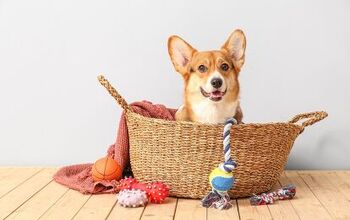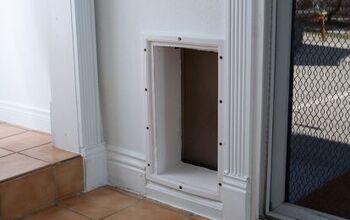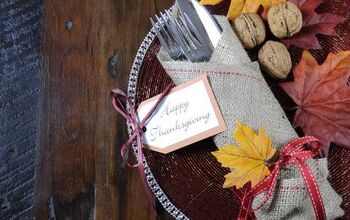Tips To Pet Proof Your Home

Bringing home a new pet is lots of fun, but it’s essential to make sure things are safe for your furry friend. Puppies and kittens are especially prone to mischief, so pet-proofing your home is a must (just like child-proofing). But even full-grown fur babies get into trouble if you don’t take the proper precautions.
Limit your pet’s access in the home, latch cabinets and drawers, and keep dangerous items out of reach. Secure cords, small items, and other choking hazards, and seal off small spaces. Always check inside appliances before using them, and take the time to train your pet so they know what they should and shouldn’t do.
When you decide to get a dog or a cat, it adds lots of joy to your life. But you’re also taking on a big responsibility caring for another creature. Therefore, as soon as you know you’re getting a pet, use these tips to pet-proof your home and make it safe for your new arrival.
Essential Tips To Create A Safe Home For Your Pet
If you have children, you may recognize many of these tips, since they’re similar to what you’d do to child-proof your home. And if you have toddlers in the house, then you may already have several of these steps in place.
However, there are a few extra considerations when it comes to four-legged family members. Therefore, check out this list of pet-proofing tips to make sure your home is as safe as it can be.
1. Latch Cabinets And Drawers
Use child-proof latches to secure cabinets and drawers. Curious pets will nose and paw open doors to access trash cans and other things that pique their curiosity.
2. Keep Medications, Cleaning Supplies And Toxins Out Of Reach
Secure all chemicals, cleaners, medications, and other toxic items in an out-of-reach spot. Wipe up spills on the floor immediately. In the garage, keep the floor clean of antifreeze and other chemicals.
It’s also important to put away food and pick up dropped food and crumbs immediately. Many human foods are unsafe for pets to eat.
3. Cover Trash Cans
The trash holds all sorts of tantalizing items for your pet, including things that are poisonous or pose choking hazards. Place your trash can inside a latched cabinet. Or use a trash can with a lid that latches shut.
4. Seal Off Small Spaces
Dogs and cats love to investigate. Tiny kittens and puppies especially find themselves in some tight spots. If your pet gets stuck in a small space, they could suffocate or sustain injuries. Block or seal any small spaces, such as areas behind appliances, between the wall and furniture, etc.
5. Secure Cords
Tie up wires, cords for shades and blinds, and similar things that could strangle or entangle your pet. Use cable ties or similar means to wrap them and keep them out of reach.
6. Keep Toilet Lids Down
Make sure everyone in the house knows to keep the toilet lids down. It’s good practice to close the toilet seat when you flush anyway to avoid the spread of contaminated droplets. But leaving a toilet uncovered can lead to small pets drowning.
7. Check Appliances Before Using Them
Kittens love to get into everything. Before you switch on the dryer or stove, make sure your curious cat didn’t hop inside to explore or hide.
8. Put Away Small Objects
Pets, especially dogs, will pretty much eat anything. Keep your floors and anywhere else your pet can access tidy. Make sure to put away kids’ toys, puzzle pieces, sewing supplies, game pieces, and other small items.
Also, check the areas your vacuum doesn’t reach. Make sure nothing is hanging out in these spots that could be dangerous for your pets.
9. Cover Vents
Keep air and heating vents and the AC return covered so pets don’t get inside vents and ducts. Routinely check vent covers to make sure they are secure.
10. Be Conscious Of Home Decor
Cats jump everywhere. Active dogs run and bump into everything. Be vigilant about your home decor choices, and avoid using breakable items or things that could injure your pet. This isn’t necessarily forever, but at least until your pet knows how to navigate through the home better.
11. Make Sure House Plants Aren’t Toxic
Don’t bring any flowers or plants into your home that are toxic to pets. If you’re unsure about the status of a particular plant, research it first or don’t bring it into your house.
12. Check Car Tires And Engine
Cats will often get inside a car engine or up on the tires to find a warm place to sleep. Before you start your car, bang on the hood or check these spots.
13. Keep Sharp Objects Out Of Reach
Don’t leave knives and other sharp objects out on the counter or other open areas. Keep sharp utensils and tools in a latched cabinet or drawer.
14. Put Away Laundry And Shoes
Buttons, drawstrings, and embellishments on clothing can choke or injure pets. Keep dirty clothes in a closed hamper and shut the laundry room door. Put clothes away instead of leaving them out in the open.
Similar to clothing, shoes also pose a threat to inquisitive pets. Buttons, buckles, snaps, embellishments, shoelaces, and similar items could cause issues. Until your pet is trained to leave these items alone, make sure to keep shoes out of reach.
15. Block Stairs
Use a safety gate to block off stairs for young pets. Once they can navigate the steps easily, you can remove the gate.
16. Double Check Drawers And Cabinets Before Closing Them
Before you close a drawer or cabinet or anything else, make sure your kitten or puppy didn’t crawl inside to investigate. If they get shut inside, they likely won’t be able to get themselves out of the situation.
17. Use A Fireplace Screen
If you have a fireplace, keep it sealed off when not in use and use a screen when a fire is lit. Always watch your pets if there’s a fire going, even if you have a screen.
18. Keep Doors Closed
Limit your pet’s access to areas by keeping all the doors closed. As your pet gets older and has proper training, you can use your judgment as to which doors you leave open.
19. Avoid Using Insect And Mouse Traps
Many insect and rodent traps contain toxic chemicals or poison. Mouse traps can snap down on a curious pet’s nose, paw, or tail. Also, if these items catch a critter and your pet eats it, they could end up getting infected with a parasite or disease.
20. Create A Barrier For The Front Door
Until your dog or cat knows not to run out every time you open the door, use a gate or other type of barrier. The barrier provides an extra layer of protection to prevent your pet from getting out and into an unsafe situation. Likewise, keep windows closed or use screens so pets don’t end up outside without your knowledge.
Protecting Your Home From Your Pets
Keeping your pets safe is your top priority, but you also need to keep your home safe from your four-legged cuties. Pets love to scratch, chew, run, and snoop, and these natural habits often lead to some undesirable results. You end up with ripped couch cushions, broken vases, stains, and other unpleasantries.
So, keep these tips in mind to prevent your cat from tearing the window screens or your pup from gnawing on the baseboards.
1. Train Your Pet
The best thing you can do to protect your pet and your home is to ensure you train them properly. You can train your dog or cat yourself, or hire a professional trainer to help you.
2. Use Sticky Tape To Prevent Scratching
Anti-scratch tape helps prevent pets from scratching furniture and other areas. Sticky tape on window sills creates a barrier, so your cat won’t claw the window screens.
3. Provide Your Pet With Proper Exercise And Mental Stimulation
Often, dogs and cats get into mischief when they’re bored or have lots of pent-up energy. It’s essential to make sure your pet gets adequate exercise every day. It’s also important to provide opportunities for mental stimulation and engagement for your dog or cat.
4. Use Potty Pads
While in the potty training phase, use pee pads near the back door or wherever you plan to let you pup go potty. The pad provides a layer of protection for those times when your dog can’t quite make it outside in time.
5. Limit Your Pet’s Access
The younger pets are, the less access they should have to the home. Until potty training is complete and your pet has proper behavioral training, keep their home environment small. Once they’re house-trained and know how to behave, you can provide them access to more areas.
6. Use Bitter Spray To Prevent Chewing
To discourage chewing, use bitter apple spray on places like the corners of furniture, baseboards, etc. You should use this as a deterrent while also training your pet not to chew these items. Also, provide your pet with items they can chew, like chew bones, toys, and pet teethers.
7. Put Away Rugs While Potty Training
To keep your rugs and mats stain-free, it’s easiest to pick them up while you’re in the potty-training phase. When you bring home a new pet, roll up the rugs until they consistently potty in the right place.
Show Your Pet You Care; Pet-Proof Your Home
These tips will help keep your pet safe and your home in tip-top shape. In addition to pet-proofing your home, make sure you dog-proof your backyard and create safe outdoor areas for your cat. Knowing your home is safe for your pets also reduces your stress and worry, so overall, everyone is happier.
Related Guides:

Stacy Randall is a wife, mother, and freelance writer from NOLA that has always had a love for DIY projects, home organization, and making spaces beautiful. Together with her husband, she has been spending the last several years lovingly renovating her grandparent's former home, making it their own and learning a lot about life along the way.
More by Stacy Randall



























